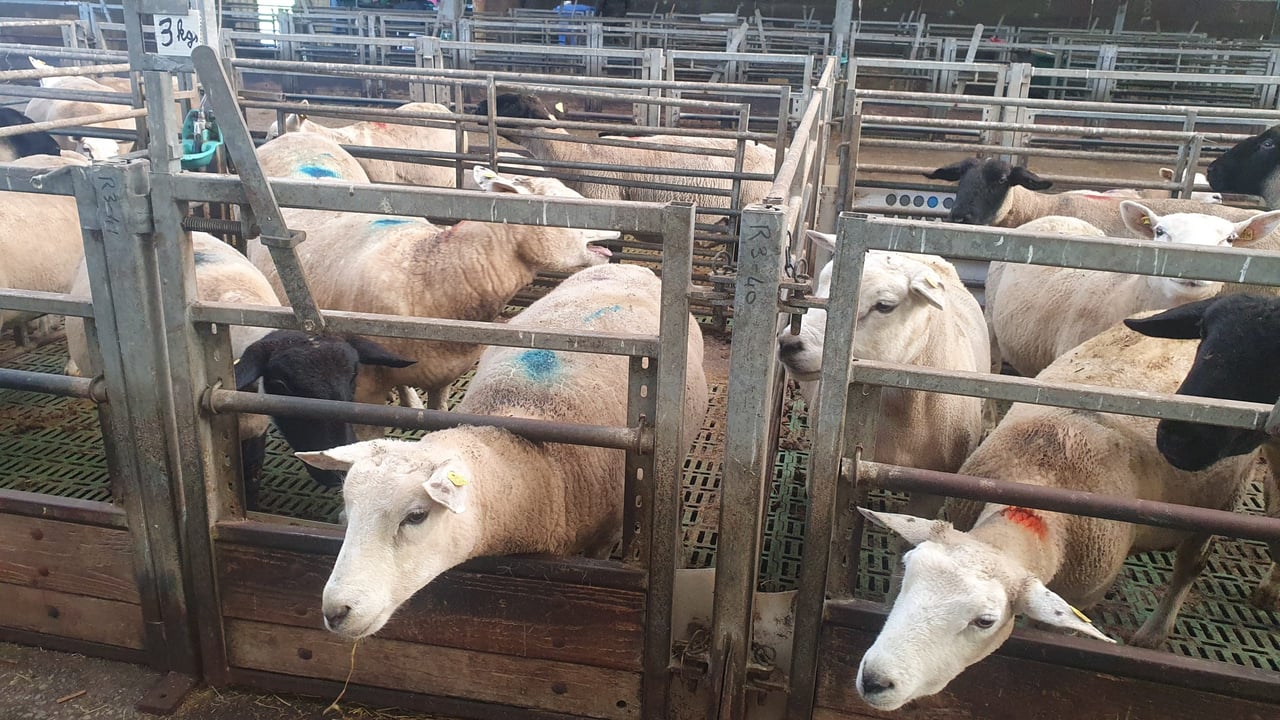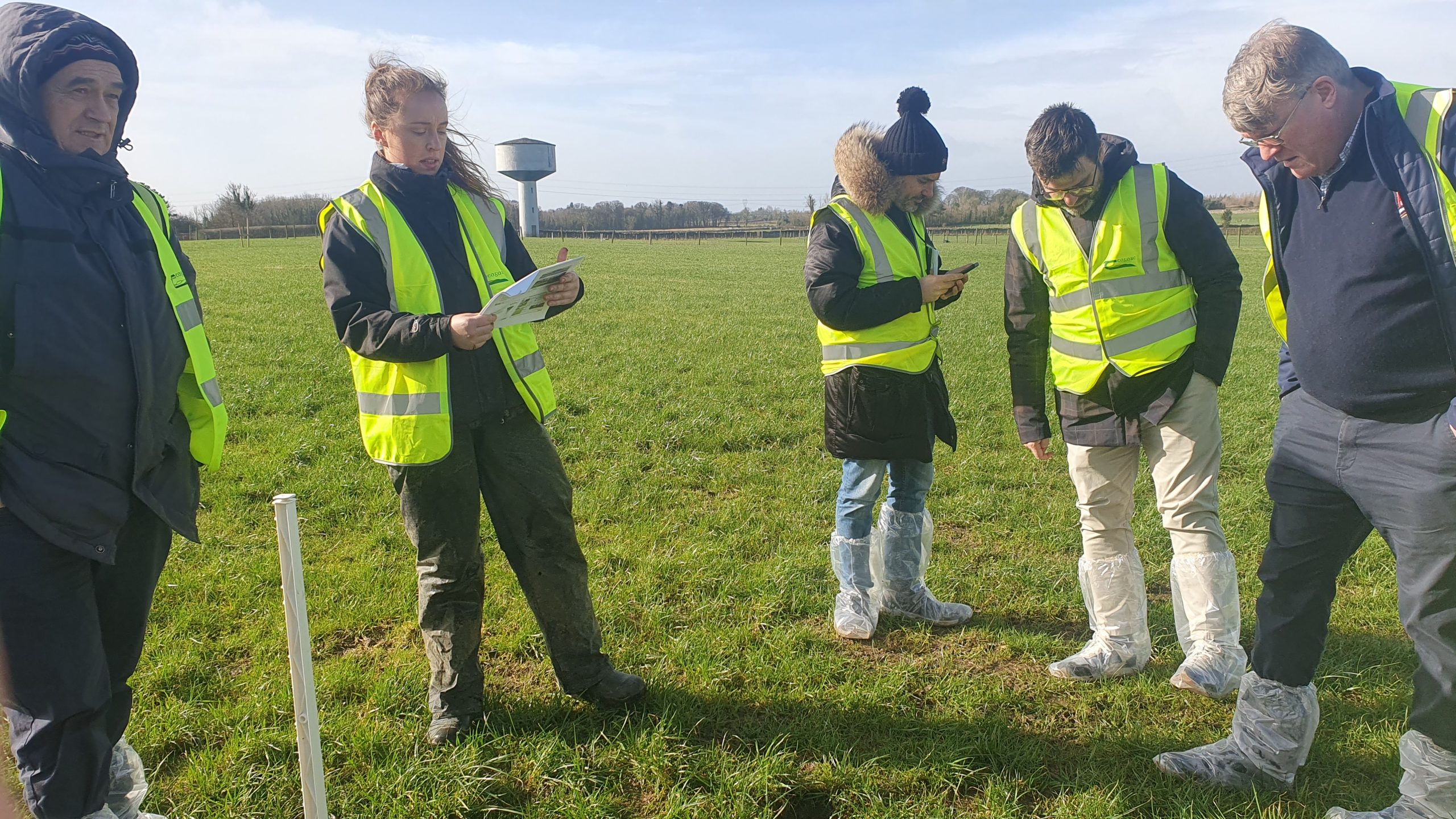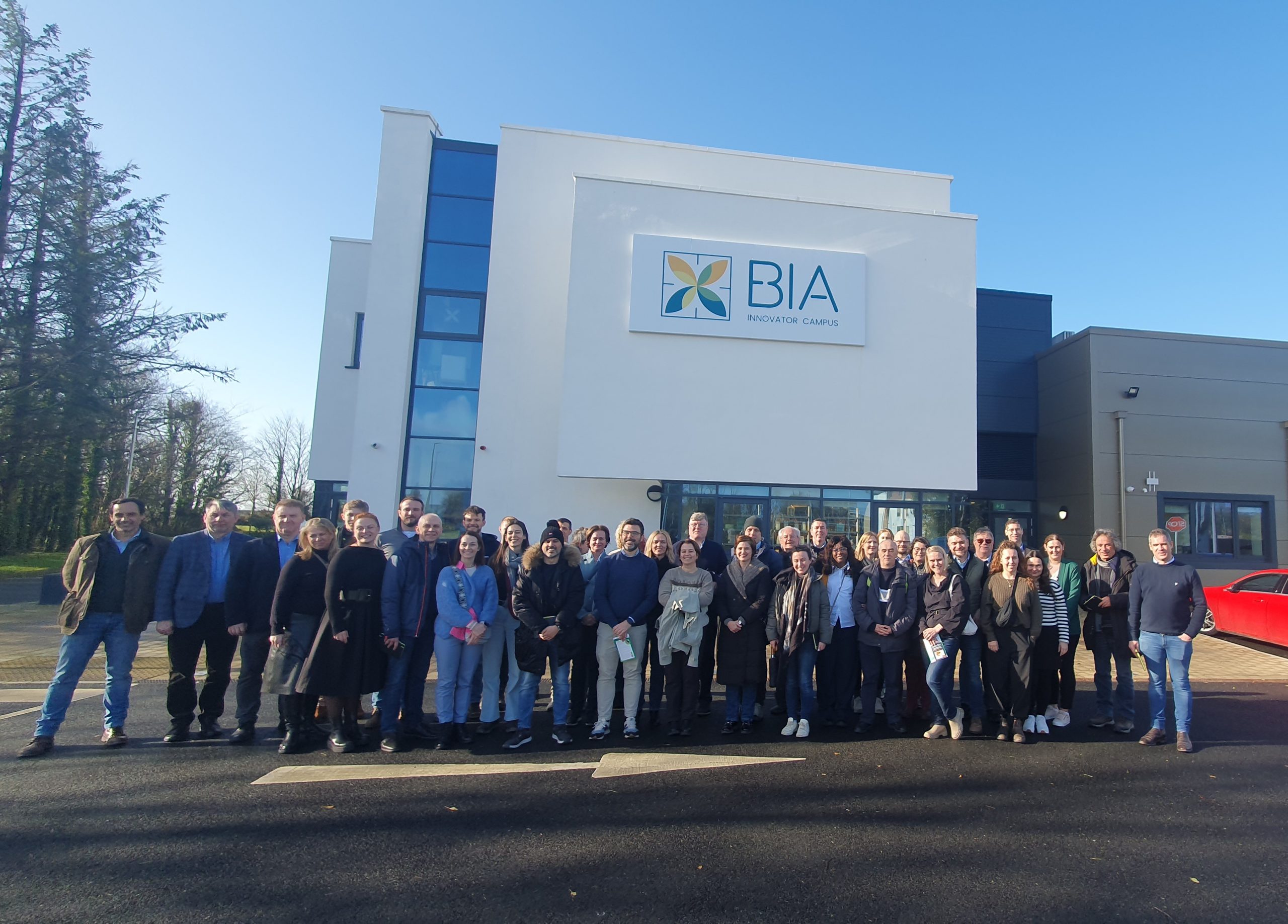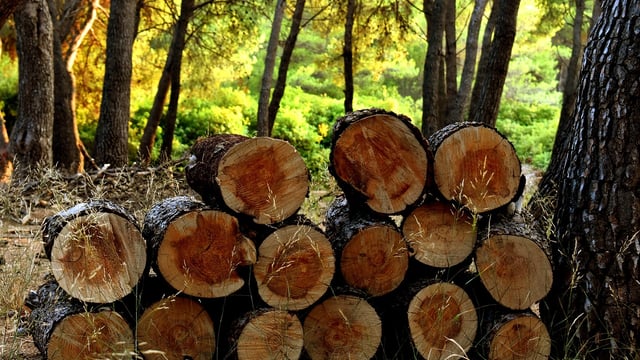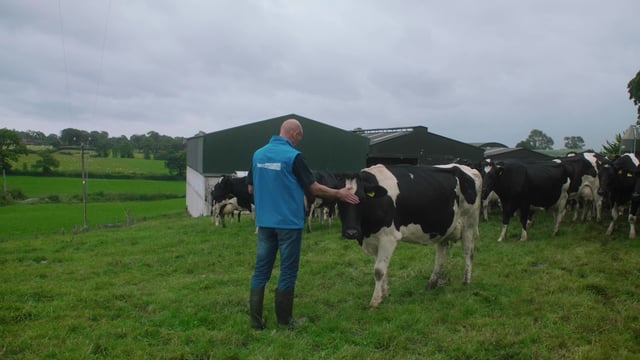Watch: EU agri advisors visit sheep research centre in Galway
Agricultural advisors from across Europe, who were in Galway for the EUFRAS General Assembly 2025 hosted by Agricultural Consultants' Association (ACA) this week, were given an update on the Teagasc Sheep Research Programme underway in Athenry.
The aim of the programme is to increase productivity, sustainability, and competitiveness of Irish sheep production systems.
In terms of genetics and breeding, the programme aims to accelerate the rate of genetic gain at industry level and identify, validate, and develop predictors of methane output from genetics.
Researchers also want to develop strategies to mitigate the development of anthelmintic resistance, carry out live fluke vaccine studies and survey, and validate lameness issues on farm.
Studies are also underway in Athenry to determine the potential of diverse swards in an effort to enhance the sustainability of pasture-based sheep production systems.
Researchers in Athenry are monitoring the integration of New Zealand genetics into the Irish flock via crossbreeding with elite Irish pedigree animals.
Research officer Sarah Woodmartin told the agri advisors that there is a particular focus on: ewe efficiency; health data; carcass data/CT scanning; lamb performance; Euro-Star Sheep Index; and novel traits.
"The high genetics and the New Zealand ewes generated a much higher profit on a per hectare basis than the low [genetics] Irish," she explained.
"They had higher ewe survivability, higher lamb performance by chasing those higher genetic gains in the ewe and then into the lamb, so quicker days to slaughter, quicker finishing times.
"That was looking at Irish versus New Zealand, but we're now looking at the cross - the hybrid of the Irish New Zealand and following through to see can we get the benefits of both," she continued.
Some of the breeds involved in the research include NZ Suffolk, Irish Suffolk and Irish Texel.
Research is also underway to monitor methane emissions according to the high and low genetics across different sward types.
Woodmartin explained that ewes are predominantly grazing outside on a pasture-based system for most of the year and typically come in to housing in December and January when grass production drops.
All ewes are pregnancy scanned in January and penned accordingly, with ewes and lambs put back out to grass again within 48 hours of giving birth, weather and health dependent.
They are finished off on grass and if they are not gone from the research centre by October, they may need to introduce some concentrates.
"We are trying to replace that concentrate with more nutritious summer active herbs and legumes to replace concentrates in the system," Woodmartin added.
The average scan rate for the flock is two, which the researcher said is "high, but is manageable with good facilities".
"Triplets are fine in the system if you can manage them, but in a lot of Irish settings [for instance] on the hill, farms in more rural areas, they're looking for one, maybe two lambs, triplets are an inconvenience."
The agri advisors also participated in a visit to BIA Innnovator Campus in Athenry which is beside the Teagasc Sheep Research Centre.
Officially launched last year, Ireland’s first National Centre of Excellence is dedicated to supporting start-up, micro, and small food businesses.
It aims to drive regional and national growth in Ireland’s agri-food sector and is designed to facilitate the launch and development of new and existing food businesses at all stages of their entrepreneurial journey.
Food businesses can opt to rent a space at the campus for a half day, day, or more, which provides top-class professional grade equipment and food technology expertise.
Some food products made at the campus include yoghurts and cheeses.
The campus comprises: A 60-seat auditorium with culinary demonstration space; a 14-station culinary training centre; 12 hot desks to allow BIA tenants and non-tenants to work; a podcast studio; a showcase room; and a range of meeting rooms available for rent to tenants and non-tenants.

